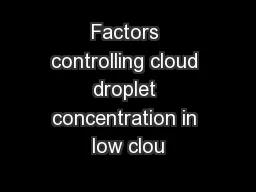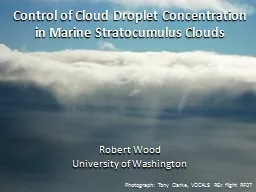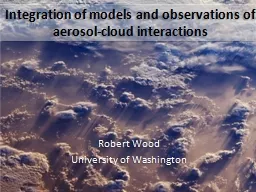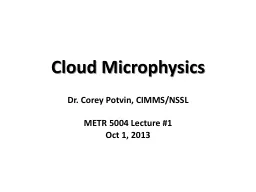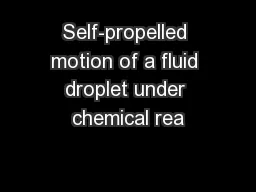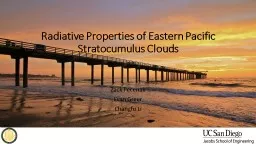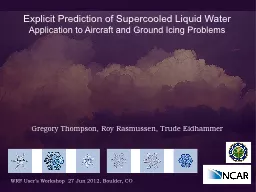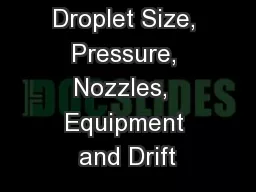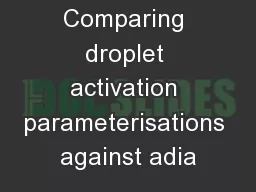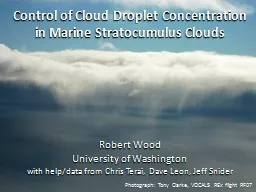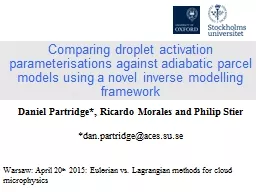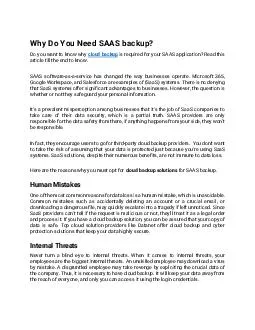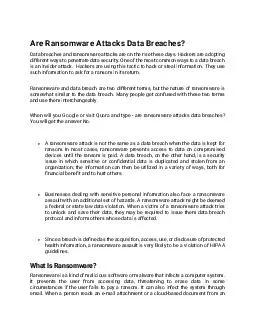PPT-Factors controlling cloud droplet concentration in low clou
Author : tatiana-dople | Published Date : 2015-10-16
Photograph Tony Clarke VOCALS REx flight RF07 Robert Wood University of Washington with helpdata from Dan Grosvenor Daniel McCoy Chris Terai Matt Lebsock Dave
Presentation Embed Code
Download Presentation
Download Presentation The PPT/PDF document "Factors controlling cloud droplet concen..." is the property of its rightful owner. Permission is granted to download and print the materials on this website for personal, non-commercial use only, and to display it on your personal computer provided you do not modify the materials and that you retain all copyright notices contained in the materials. By downloading content from our website, you accept the terms of this agreement.
Factors controlling cloud droplet concentration in low clou: Transcript
Download Rules Of Document
"Factors controlling cloud droplet concentration in low clou"The content belongs to its owner. You may download and print it for personal use, without modification, and keep all copyright notices. By downloading, you agree to these terms.
Related Documents

